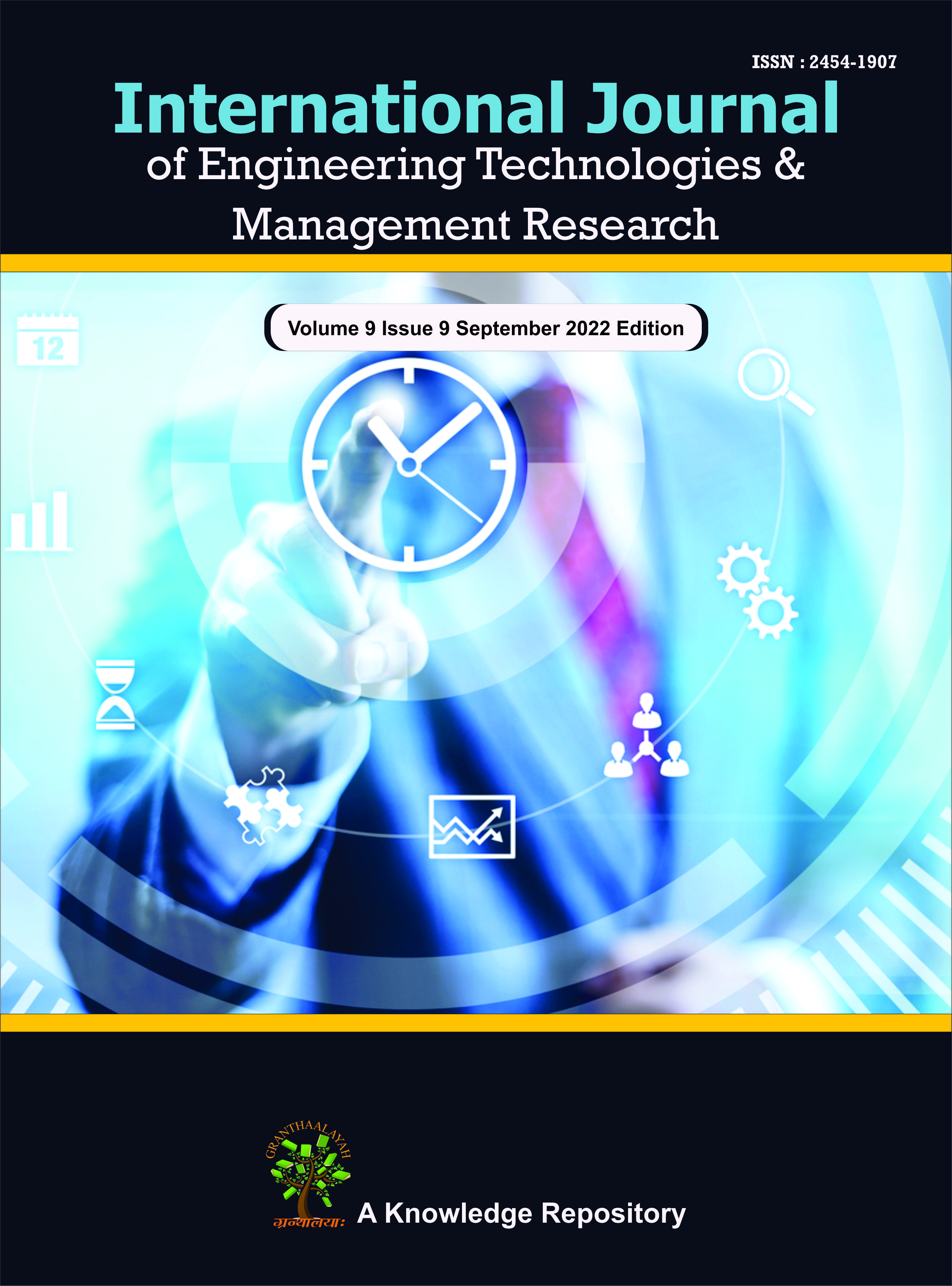COMPLIANCE OF THERMAL COMFORT PARAMETERS WITHIN THE STUDENTS’ DORMITORY, RESIDENTIAL, AND PUSAT ISLAM ENGINEERING CAMPUS, USM BASED ON INDUSTRY CODE OF PRACTICE ON INDOOR AIR QUALITY (ICOP) 2010
DOI:
https://doi.org/10.29121/ijetmr.v9.i9.2022.1222Keywords:
Indoor, PMV, PPD, Prayer Hall, Thermal Comfort, VentilationAbstract
This study assessed occupants’ satisfaction with their surrounding temperature conditions. The study was carried out at the student’s dormitory, residential and prayer hall of Pusat Islam Engineering Campus, USM. It entailed determining the compliance of thermal comfort parameters; temperature (T), relative humidity (RH) and air movement (AM). The parameters are then used as input in the Center for the Built Environment (CBE) Thermal Comfort Tool to obtain Predicted Mean Value (PMV) and Predicted Percentage Dissatisfied (PPD) for ASHRAE Standard-55. The monitoring for this study was conducted for three hours in a three-time period; 6 A.M. - 9 A.M., 11 A.M. - 2 P.M., and 5 P.M. - 8 P.M. for students’ dormitory and residential. For monitoring at Pusat Islam, it was conducted in two slots; 11 A.M. - 2 P.M. and 6 P.M. - 10 P.M., and it was assessed during Ramadan when the Muslims perform the Teraweh prayer. Overall, the finding indicates that most of the time, the thermal comfort parameters at the three monitoring places did not comply with the (Industry Code of Practice on Indoor Air Quality) ICOP limit. Hence, it also influenced the PMV and PPD values which did not adhere to the ASHRAE Standard-55. This could be due to the poor design of the building where the plan itself does not promote cross-ventilation, the high outdoor temperature, and insufficient indoor air movement, thus causing discomfort to the occupants
Downloads
References
ASHRAE Standard. (2004). Thermal Environmental Conditions for Human Occupancy 55-2004. American Society of Heating, Refrigerating and Air-Conditioning Engineers, Inc., 2004(ANSI/ASHRAE Standard 55-2004), 1–34.
Givoni, B. (1981). Conservation and the use of Integrated-Passive Energy Systems in Architecture. Energy and Buildings, 3(3), 213–227. https://doi.org/10.1016/0378-7788(81)90007-4. DOI: https://doi.org/10.1016/0378-7788(81)90007-4
ICOP-IAQ. (2010). Industry Code of Practice on Indoor Air Quality. Ministry of Human Resources Department of Occupational Safety and Health.
Lee, S. C. and Chang, M. (2000). Indoor and Outdoor Air Quality Investigation at Schools in Hong Kong. Chemosphere, 41(1–2), 109–113. https://doi.org/10.1016/S0045-6535(99)00396-3. DOI: https://doi.org/10.1016/S0045-6535(99)00396-3
Olesen, B. W. and Brager, G. S. (2004). Predict Comfort. August.
Peeters, L., Dear, R. de, Hensen, J. and D’haeseleer, W. (2009). Thermal Comfort in Residential Buildings : Comfort Values and Scales for Building Energy Simulation. Applied Energy, 86(5), 772–780. https://doi.org/10.1016/j.apenergy.2008.07.011. DOI: https://doi.org/10.1016/j.apenergy.2008.07.011
Wafi, S. R. S. and Ismail, M. R. (2010). Occupant’s Thermal Satisfaction a Case Study in Universiti Sains Malaysia (USM) Hostels Penang, Malaysia. European Journal of Scientific Research, 46(3), 309–319.
Published
How to Cite
Issue
Section
License
Copyright (c) 2022 Ummi Zulaikha Ahmad Halili, Nor Azam Ramli, Nur Baitul Izati Rasli

This work is licensed under a Creative Commons Attribution 4.0 International License.
License and Copyright Agreement
In submitting the manuscript to the journal, the authors certify that:
- They are authorized by their co-authors to enter into these arrangements.
- The work described has not been formally published before, except in the form of an abstract or as part of a published lecture, review, thesis, or overlay journal.
- That it is not under consideration for publication elsewhere.
- That its release has been approved by all the author(s) and by the responsible authorities – tacitly or explicitly – of the institutes where the work has been carried out.
- They secure the right to reproduce any material that has already been published or copyrighted elsewhere.
- They agree to the following license and copyright agreement.
Copyright
Authors who publish with International Journal of Engineering Technologies and Management Research agree to the following terms:
- Authors retain copyright and grant the journal right of first publication with the work simultaneously licensed under a Creative Commons Attribution License (CC BY-SA 4.0) that allows others to share the work with an acknowledgment of the work's authorship and initial publication in this journal.
- Authors can enter into separate, additional contractual arrangements for the non-exclusive distribution of the journal's published version of the work (e.g., post it to an institutional repository or edit it in a book), with an acknowledgment of its initial publication in this journal.
- Authors are permitted and encouraged to post their work online (e.g., in institutional repositories or on their website) before and during the submission process, as it can lead to productive exchanges, as well as earlier and greater citation of published work.
For More info, please visit CopyRight Section





















